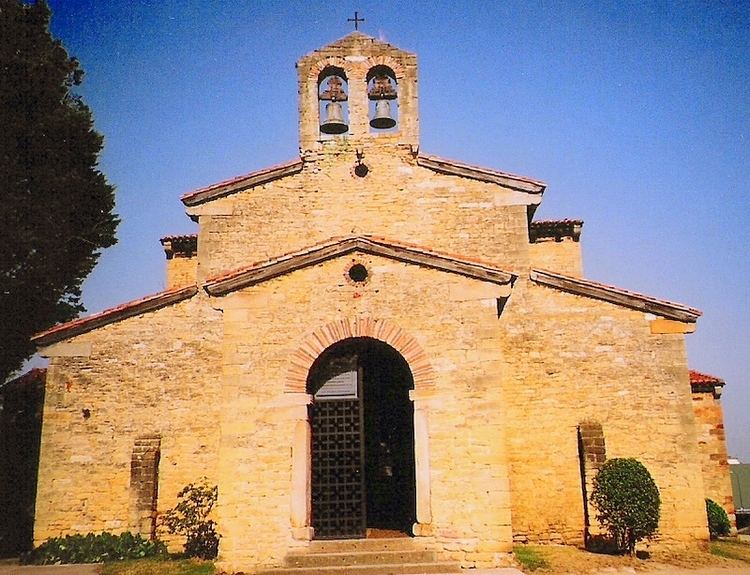Year consecrated 9th century Architectural style Pre-Romanesque | Affiliation Roman Catholic Ecclesiastical or organizational status Church Direction of façade SE Phone +34 985 28 55 82 Extension 1998 | |
 | ||
Similar San Miguel de Lillo, Santa María del Naranco, Estatua de Mafalda, Oviedo Cathedral, Campo de San Francisco | ||
Bold text San Julián de los Prados, also known as Santullano, is a Pre-Ramirense church from the beginning of the 9th century in Oviedo, the capital city of the Principality of Asturias, Spain. It is one of the greatest works of Asturian art and was declared an Historical-Artistic Monument by the Spanish Ministry of Culture in June 1917 and a World Heritage Site by UNESCO on 2 December 1998.
Contents
The church's construction was ordered by Alfonso II of Asturias and it was built by the court architect Tioda c. 830. It is dedicated to the martyred Egyptian saints Julian and Basilissa.
Architecture
The spacious church clearly displays the characteristics of its style. It is of basilican plan with a nave and two aisles separated by square piers which support semi-circular arches and with a transept of impressive height. The iconostasis, that separates the sanctuary from the rest of the church is remarkably similar in appearance to a triumphal arch. The size and originality of the church stands out and distinguishes it from works of Visigothic art. However, without doubt, that which most attracts attention to this church is the pictorial decoration, with aniconic frescoes (stucco, very well executed), painted in three layers, with architectural decoration that bears clear Roman influences. Although it appears more a monastic rather than a royal church, a gallery was reserved for the king in the transept.
Of the three original entrances to the church, two have been filled in.
Sculptural
The only sculptural decoration that has survived to the present day is that of the marble capitals on which rest the semi-circular arches. There are also two marble flagstones with hexagonal geometric figures and floral motives that are found in the central chapel.
Pictorial
The pictorial decoration is the most important element that can be seen in the church. It is without doubt the most important of its time, in its extent and conservation as much as in the variety of icons represented, in all of Western Europe.
